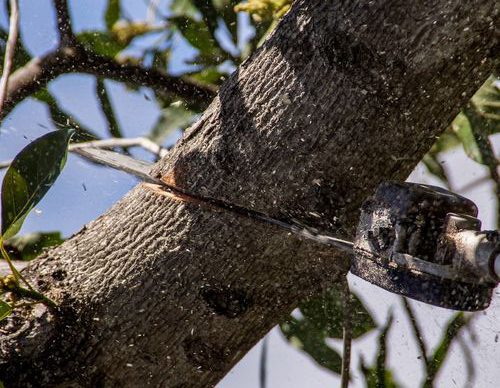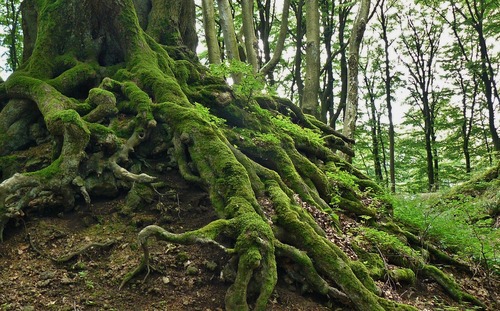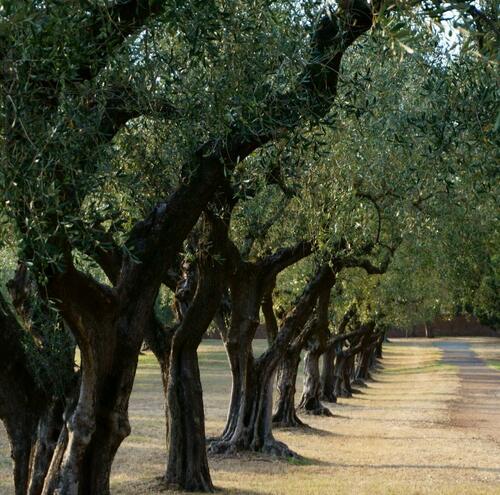The Arborist Now Expert Tree Quiz
Introduction
Recently, we posted a quiz designed to test the tree knowledge of the general public, and we want to share a similar quiz.
However, we made this quiz for tree care professionals (who should have aced the previous quiz). Scroll down to the bottom for the answers. No cheating!
1. As you cut through a log, your chainsaw passes through:

A Chainsaw Passes Through a Large Branch
a. Cambium, then xylem, then phloem
b. Phloem, then xylem, then cambium
c. Xylem, then phloem, then cambium
d. Phloem, then cambium, then xylem
2. Which of the following species are in the Beech Family ( Fagaceae )?
a. American chestnut, coast live oak, and tanoak
b. American chestnut, American beech, black locust
c. American beech, western redbud, big leaf maple
d. Giant sequoia, dawn redwood, coastal redwood
3. Which group below contains species that feature compound leaves?
a. Shagbark hickory, red mulberry, and red cedar
b. Green ash, red maple, and box elder
c. Coast live oak, bluejack oak, and live oak
d. Green ash, shellbark hickory, and California buckeye
4. Which of the following trees is most likely to be hazardous?
a. A sourwood tree that leans about 10 degrees away from vertical
b. A mature Callery pear tree with codominant leaders
c. A red maple tree that produces an abundance of surface roots
d. A coast live oak that sheds its leaves during a drought
5. Which of the following equations yields a tree’s critical root radius?
a. (Diameter of the tree in inches) x (12 to 18 feet)
b. (Radius of the tree in inches) x (12 to 18 inches)
c. (Diameter of the tree in inches) x (12 to 18 inches)
d. (Radius of the tree in inches) x (120 to 180 inches)

Moss-covered Tree Roots in a Forest
6. Which of the following is not associated with Sudden Oak Death?
a. Bark beetles ( Pseudopityophthorus pubipennis )
b. Ambrosia beetles ( Monarthrum scutellare )
c. Emerald ash borers ( Agrilus planipennis )
d. Sapwood decay fungus ( Annulohypoxylon thouarsianum )
7. What types of trees have a characteristic star-shaped pith?
a. Redwood trees
b. Juniper trees
c. Oak trees
d. Sweetgum trees
8. To ensure adequate strength and stability, tree branches should be no more than ___ percent of the diameter of the trunk.
a. 20 percent
b. 25 percent
c. 40 percent
d. 50 percent

An Arborist Now Expert Trims Tree Branches
9. Which of the following statements is true?
a. White rots primarily cause the decay of lignin
b. Brown rots primarily cause the decay of lignin
c. White rots primarily cause the decay of cellulose
d. None of the above
10. Which of the following trees is an example of a dicotyledon?
a. Palm tree
b. Pine tree
c. Maple tree
d. Banana tree
Answers:
1. D – The cambium lies between the phloem and xylem and produces both.
2. A – Oaks, chestnuts, tanoaks, and beeches are all in the family Fagaceae .
3. D – Ash, hickory, and buckeye trees all feature compound leaves .
4. B – 10-degree leans are minor, surface roots are not necessarily problematic, and coast live oaks may shed their leaves to conserve water. Codominant leaders on pear trees frequently fail.
5. C – To find the critical root radius , imagine a circle that is one to one-and-one-half feet in diameter for every inch of trunk diameter. A tree with a 2-inch-thick trunk requires a 2-to 3-foot diameter critical root zone.
6. C – Emerald ash borers are not associated with Sudden Oak Death . All three other species are frequent secondary invaders.
7. C – Oak trees have star-shaped piths .
8. D – Branches must be less than one half the diameter (50 percent) of the trunk to remain structurally sound .
9. A – White rots primarily digest lignin, while brown rots primarily digest cellulose.
10. C – As conifers, pine trees are neither monocotyledons nor dicotyledons . Palm trees and banana trees are monocotyledons. Accordingly, the answer is maple tree.

A Row of Beautiful Mature Olive Trees
Conclusion
We hope our Expert Tree Quiz challenged your existing knowledge about trees and increased your understanding and appreciation of these vital natural resources. Whether you’re a seasoned arborist or a curious nature lover, it’s important to test your skills and inspire yourself to learn more about the trees around you. Remember, every tree has its own story and characteristics; quizzes like these help us recognize their unique aspects and the critical roles they play in our environment. Let’s all grow our commitment to nurturing and preserving our urban forests!
Arborist Now is San Francisco’s premier tree service company. Be sure to contact us for all your tree care needs!
Originally published on May 31, 2016.


